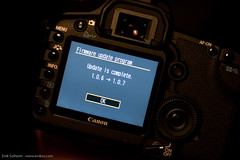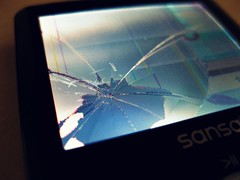For all those who want to understand the kind of impact that the Japan earthquake had on the manufacturing of LCD panels, I invite you to go and check the excellent article in DisplaySearch Blog (Impact of the Japanese Earthquake on the FPD Industry) even though it was written only three days after the earthquake itself, so well before a real assessment was done of the actual consequences.
Broadly summarized, it would be something like:
- On top of the small direct devastation, the mere stoppage of the production is a significant problem for plants.
- Manufacturing sites like Hitachi Display (Chiba prefecture), NEC’s Gen 2 (Akita prefecture), Toshiba Fukaya & Ishikawa, or Epson Gen 2 are mostly producing small-sized panels, with little or no impact on the bulk of the Flat Panel Displays market (flat panel TV screens). [But this is a direct hit for other applications like photo gear, of course]
- the article covers the technologies in order to assess the situation and we can see (or discover in many cases) the diversity of the products that enter in a lowly LCD: glass tanks (to manufacture raw glass panels aka mother glass panels), electronic components, color filters, Anisotropic Conductive Film (or ACF) to glue electronic components onto the glass surface.
- Manufacturing tools and development tools are also hit, but since you don’t purchase them each and every day the immediate risk is quite low.
- The actual stock levels at earthquake time for many components or elements is decisive for long-term consequences.
From what I heard personally and more directly, I can confirm this analysis. Despite its very geenral for, it is of the utmost precision (and this was expected from a well-informed technology blog like DisplaySearch Blog).
But they went even further into details with another article (Emerging Disruptions to the FPD Supply Chain). Here, you will find details about several other key technologies which were not initially included in the first article:
- NF3 (Nitrogen Trifluoride), a gas used for cleaning deposition chambers. The stocks were very low already and the earthquake put this all in serious shortage.
- ITO (Indium Tin Oxide), the chemical component used to draw the invisible conductive tracks on the surface of the LCD is usually provided as pellets or targets whose production is coming essentially from Japan and one of its main manufacturers is currently out of operation.
- Color pigments are a specialty for several Japanese companies and some colors are in near total shortage at a global level, even if some replacements may be quickly developed.
- The micro-connectors used on the LCD modules or around them (but also between many of the photo camera components) have also been dramatically hit.
- Some production equipments (steppers) from Nikon for production of semi-conductors are terribly hit too. And some industrial launches for the future (in some months) may be very seriously in trouble, including some new microprocessors or recent technology display panels (like AMOLED for example).
Listing Hirose, manufacturer of micro-connectors, will be particularly noticed by photographers understanding that Canon and Nikon are among their most prominent customers.
From what one heres, all this industry is currently trying to assess the exact situation and the amount of degradations (this mere remark nearly a month after the tsunami gives an idea of the range of difficulties). I was informed of engineers moving around their plant with the only help of a hand flash light or of a headlight, while most of the company personnel was not even able to reach the factory itself.
I’ll let you imagine the task at hand. I let you imagine the energy that they are all using to re-start or boot-strap this very sensitive and normally very fine-tuned engine that is at the core of the industry.
Yesterday announcement by Sony (via TTKN) was also informing us the several plants of the Sony Chemical & Information Device Corporation division (See previous lines about ACF) had not been able to fully restart operations on the 28th of March.

